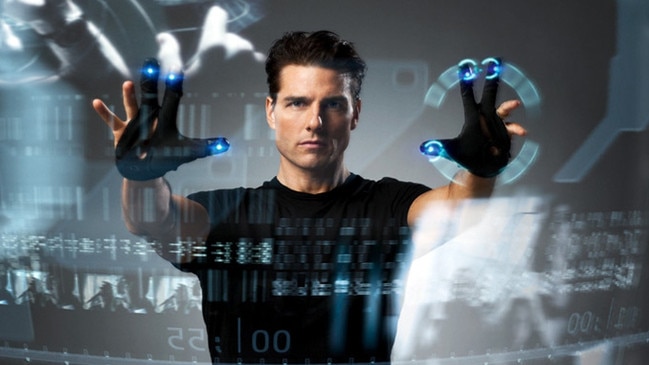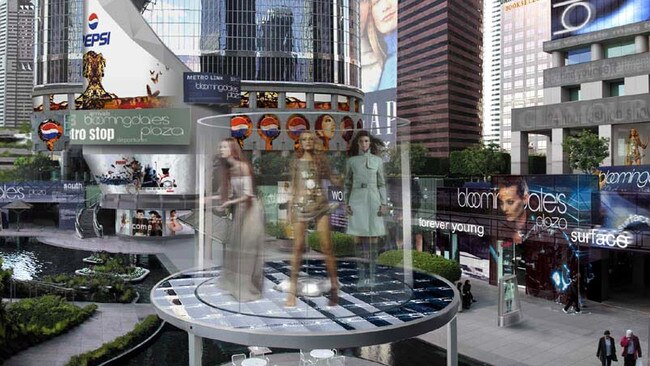Forget Minority Report — Scientists tap Foursquare and Twitter data to predict crime
Science fiction is becoming science fact as researchers use our app and social media data to predict when and where crimes will occur, with astounding implications for real-life policing.
Behind the Scenes
Don't miss out on the headlines from Behind the Scenes. Followed categories will be added to My News.
In 2002, Steven Spielberg’s science fiction thriller Minority Report starred Tom Cruise as 2054 police officer John Anderton from Washington Police’s ‘PreCrime Division’, able to make arrests before crimes were committed.

The tech noir film was all artificial intelligence, computer hacks and drones, citywide facial and retina recognition cameras, advertisers that can track you socially for personalised pop ups, voice-automated homes reached by driverless cars, and gesture-based computer interfaces.
Sixteen years ago, those technologies seemed far-fetched but today are part of everyday life.
According to Melbourne’s RMIT University now so too is the crime-predictor premise of the film, with astounding implications for real-life crime fighting.
Terror plot: How a rookie spy foiled Christmas carnage
Escapee: Aussie fugitive taunts cops with new island jaunt
Police resourcing currently largely relies on patterns and trends based on geographic and demographic information such as age, income and population density from long-term historical data.
But researchers say these can no longer capture a city’s dynamic nor criminal face since they do not include shorter-term human mobility.
By tapping into real-time social media location movement and activities data, they have been able to more accurately predict the times and places of various crimes, including assaults, thefts, traffic-related offences, drug offences and frauds.
RMIT data scientist and senior lecturer Dr Flora Salim said in a trial using data from Brisbane, based on 20,000 check-ins from 611 users of the location app Foursquare and Twitter, her team was able to model crime patterns that were 16 per cent more accurate at predicting assaults, 6 per cent more accurate for predicting unlawful entry, 4 per cent better at predicting drug offences and theft and 2 per cent better for fraud prediction.
They then looked at New York and almost 230,000 location app check-ins, coupling the data with recommendation algorithms to better improve crime location predictions.
FOLLOW: True Crime Australia on Facebook and Twitter
“Crime is a special temporal event that’s happens in time and space and you can model that and observe these patterns using historical data and there is a lot of work predicting crime just using these patterns,” Dr Salim said.
“But the more we read about crime events and occurrences, you see they are highly influenced by the patterns of human dynamics like, for example, certain areas where there is higher distribution of restaurants and entertainment. So it’s about observing the dynamics of human mobility.
“The widespread use of social media such as Twitter and Foursquare — which all gather huge amounts of data on our location, activities and preferences — provides unprecedented opportunities to capture the movement and activity of people across a city.
“Based on these positive results, this technology could allow police to design more effective patrol strategies with limited resources by sending officers to the places where crime is more likely.”

Dr Salim said data from other sources was also included in their overall findings, such as weather patterns and transport schedules.
“We looked at this open data that had been released and every single crime data released was volume metric summary or aggregate,” Dr Salim said. “For example in Melbourne the data that was released was basically the number of types of crime that happened in a month so you can’t predict much, it’s just aggregate numbers. But the one in Brisbane had it as a raw event time span and the type of crime that happened.”
She said in future her team could look at modelling in cities like Sydney, Melbourne or Adelaide but the raw data available would have to be different.
She said the program could also be scaled up to process larger samples from social media platforms, apps or mobile networks, such as Google, that collected location data.

Police in the US have already been using predictive crime modelling techniques employing real-time algorithms, with a pilot in Memphis alone seeing arrest rates up and crime rates down.
Another project Salim is involved in looks at algorithms to predict, with high levels of accuracy, what we’ll do in the second half of our day based on historic patterns and data collected from the first half of our day.
“Research into the pattern of human movement, based on data from our mobile apps, often shows how predictable many of our activities are,” Salim says.
.


